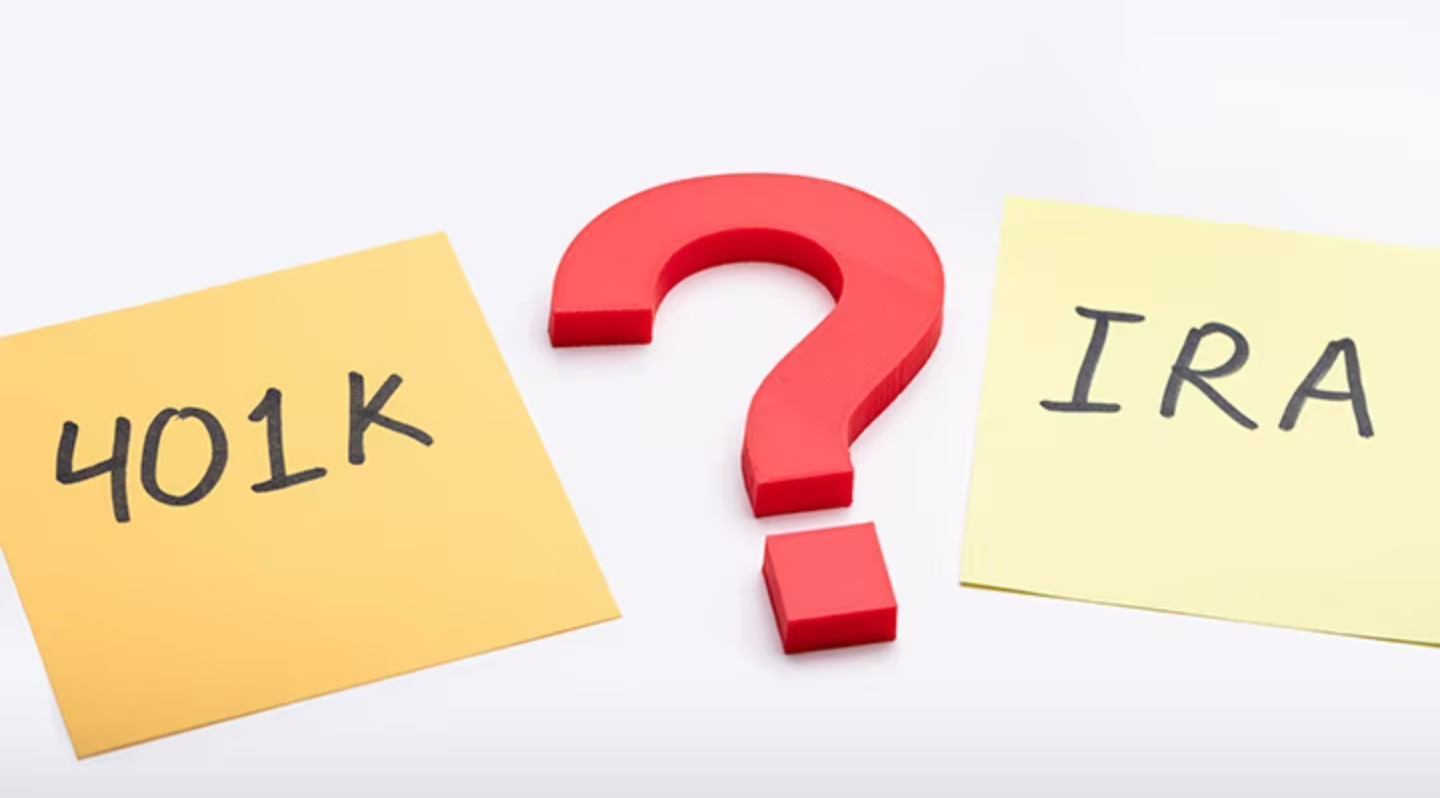Understanding the Impact of Termination on Your Pension Plan [2024]
Understanding the impact of job termination on your pension is crucial for safeguarding your financial future. This blog explores the essentials of pension plans, the effects of termination, and the available options to secure your retirement savings.
Abhinil Kumar
Author

Imagine this: you’ve spent years working diligently at your job, contributing to your pension, and planning for a comfortable retirement. Then, one day, without warning, you’re handed a pink slip. The shock is overwhelming, and as the reality of your termination sets in, a cascade of questions floods your mind. One of the most pressing: “What happens to my pension?”
This scenario, though distressing, is a reality for many. Understanding what happens to your pension if you get fired is not just crucial—it’s imperative for safeguarding your financial future. In this blog, we will walk you through the essential components of pension plans, the impact of termination, and the options you have to secure your retirement savings.
Understanding Your Pension Plan
A pension plan is a retirement savings vehicle provided by employers to help employees save for their future. It typically consists of key components such as plan types, eligibility requirements, vesting periods, and rules pertaining to keeping the pension.
There are two main types of pension plans: defined contribution (DC) plans and defined benefit (DB) plans. DC plans, such as 401(k)s, allow employees to contribute a portion of their salary to their retirement account, often with employer-matching contributions. DB plans, on the other hand, provide a specific payout amount based on factors like salary and years of service.
Eligibility requirements vary by plan and employer. Some plans may have immediate eligibility upon hire, while others may have a waiting period, such as six months or a year. Vesting periods dictate how long employees must work for a company before they are entitled to keep the employer contributions to their pension plan. Typically, vesting periods range from three to five years.
Reviewing the pension plan summary description is crucial to understanding the claim process and expected payout. This document outlines the specific rules and procedures for accessing the pension, including age requirements, retirement options, and survivor benefits. Knowing this information can help employees make informed decisions about their retirement.
If an employee is fired after becoming vested in a pension plan, they may have the possibility of bringing a wrongful termination lawsuit. While pension plan provisions vary, some plans protect employees from losing their vested benefits due to termination. Consulting an employment attorney can help determine the legal options available in such circumstances.
Types of Pension Plans
There are two main types of pension plans: defined contribution (DC) plans and defined benefit (DB) plans.
- Defined Contribution Pension (DC): This type of pension plan offers a lifetime income stream based on years of membership and salary. The pension amount is determined by a formula that takes into account the member’s years of service and their average salary over a certain period of time. The employer is responsible for funding the plan and assuming any investment risk. Upon retirement, the member will receive a predetermined monthly income for the rest of their life.
- Defined Benefit Pension (DB): Unlike defined benefit plans, defined contribution pensions are based on individual contributions and investment performance. The employee and/or employer contribute a certain amount or percentage of the employee’s salary to the plan. These contributions are invested in various financial instruments, such as stocks, bonds, or mutual funds. The value of the pension at retirement is determined by the contributions made, the investment performance, and any fees or expenses deducted. Upon retirement, the member can choose how to withdraw the funds, either as a lump sum or as periodic payments.
The key difference between the two types of plans is the level of guarantee they offer. Defined benefit pensions provide a predictable lifetime income stream, while defined contribution pensions do not guarantee a specific amount of income and are subject to fluctuations in investment returns. Defined benefit plans also require the employer to fund the plan, while defined contribution plans rely on employee and/or employer contributions.
Eligibility Requirements and Vesting Periods
Eligibility requirements for pension plans vary by plan and employer. Some plans may have immediate eligibility upon hire, while others may have a waiting period, such as six months or a year. Vesting periods dictate how long employees must work for a company before they are entitled to keep the employer contributions to their pension plan. Typically, vesting periods range from three to five years.
Importance of Knowing Your Plan Details
Knowing the details of your pension plan is crucial. Reviewing the pension plan summary description can help you understand the claim process and expected payout. This document outlines the specific rules and procedures for accessing the pension, including age requirements, retirement options, and survivor benefits.
Impact of Termination on Your Pension
When an employee is terminated, it can have a significant impact on their pension. In many cases, the termination may result in the termination of their pension and benefits as well. This can leave the employee in a precarious financial situation, especially if they were relying on their pension as a source of income in retirement.
One notable case that exemplifies this impact is that of Andrew McCabe, the former deputy director of the Federal Bureau of Investigation (FBI). McCabe was fired just two days before his retirement, which led to the loss of his full pension. This abrupt termination not only affected his financial stability but also sparked a public debate on the fairness and consequences of such actions.
After termination, employees still have certain rights that can influence their pension. These rights may include the ability to receive a portion of their pension based on the years of service they have completed, the option to roll over their pension into an individual retirement account (IRA), or the possibility of receiving a lump-sum payment instead of a traditional pension
Immediate Effects on Your Pension Benefits
When an individual is fired from their job, there are immediate effects on their pension benefits. The most notable impact is the cessation of pension contributions. Without an active job and ongoing employment, the individual is no longer able to contribute to their pension fund. This means that the steady flow of contributions into their pension account abruptly halts.
Another immediate effect is the reduction in the value of pension benefits. With no new contributions being made, the growth of the pension fund will be limited to the existing funds and any investment returns earned on those funds. This can result in a slower growth rate and potentially a reduction in the overall value of the pension benefits, especially if the individual is relatively young and has many years left until retirement.
If no further contributions are made and the pension fund remains stagnant, it may be classified as an “old” pension. This classification simply refers to a pension that is no longer receiving new contributions and is not actively being managed or added to. An old pension does not benefit from ongoing contributions and may be subject to different rules and regulations compared to a pension that is still actively receiving contributions.
Vesting Period Requirements
Vesting period requirements are pre-established conditions that determine the gradual release of stock options or other employee benefits. These conditions are designed to reward and retain employees over a specified period of time.
During the vesting period, employees earn the right to the stock options or benefits granted to them. However, they cannot immediately exercise or access these benefits until they fulfill the predetermined conditions. These conditions are typically based on factors such as length of service, company performance, or individual performance goals.
The purpose of a vesting period is to encourage employee ownership and retention. By gradually releasing stock options or benefits over time, it incentivizes employees to remain with the company for the long term. It aligns the interests of the company and the employees, as both parties benefit from the growth and success of the organization.
Vesting periods also help to mitigate the risk of employees leaving shortly after receiving stock options or benefits. The gradual release of these incentives encourages a sense of loyalty and commitment to the company. It ensures that employees have a vested interest in the organization’s success, as they have to fulfill the predetermined conditions before fully benefiting from their rewards.
Legal Recourse and Wrongful Termination
If an employee is fired after becoming vested in a pension plan, they may have the possibility of bringing a wrongful termination lawsuit. Consulting an employment attorney can help determine the legal options available in such circumstances.

Impact of Termination on Your Pension Plan
Options for Your Pension Funds Post-Termination
After termination, you still have several options for managing your pension funds.
1. Rolling Over Funds to an Individual Retirement Account (IRA)
Rolling over funds to an individual retirement account (IRA) is a process by which an individual moves their retirement savings from a previous employer-sponsored plan, such as a 401(k), into an IRA. This process allows individuals to take control of their retirement savings and enjoy various benefits.
One of the primary benefits of rolling over to an IRA is the ability to consolidate investments. Many individuals may have multiple retirement accounts from previous employers, making it difficult to track and manage their investments effectively. By rolling over these funds into an IRA, they can consolidate all their retirement savings into a single account, making it easier to manage and monitor their investments.
Another advantage of rolling over to an IRA is the flexibility it offers in terms of investment choices. While employer-sponsored plans often have limited investment options, IRAs provide a broader spectrum of investment options, giving individuals the freedom to choose investments that align with their investment goals and risk tolerance.
There are two ways to move the old plan’s balance to an IRA. One way is through a direct transfer, where the funds are transferred directly from the old plan to the IRA without the individual receiving the money. This is a non-taxable event and allows for a seamless transfer of funds. Another way is by requesting a lump-sum distribution, where the individual receives the funds from the old plan and then deposits them into the IRA within 60 days. However, in this case, taxes may be due, and there is a risk of penalties if the funds are not deposited into the IRA within the specified time frame.
2. Transferring Funds to a New Employer’s Retirement Plan
Transferring funds to a new employer’s retirement plan involves several key considerations, such as investment options, fees, and the consolidation of accounts. To begin the process, the employee should first review the investment options available in the new employer’s retirement plan. This includes assessing the range of investment choices, such as mutual funds, target-date funds, or individual stocks, and determining if they align with the employee’s investment objectives and risk tolerance.
Next, the employee should examine the fees associated with the new plan. This includes understanding the expense ratios of the investment options, as well as any administrative or transaction fees. Comparing these fees to the employee’s current retirement plan will help determine if the new plan offers a more cost-effective option.
Consolidation of accounts should also be considered. If the employee has multiple retirement accounts, such as a previous employer’s plan or an individual retirement account (IRA), consolidating these accounts into the new employer’s plan may simplify management and potentially reduce administrative fees.
To initiate the transfer, the employee typically contacts the new plan administrator or HR department to request the necessary forms. These forms may require details about the current retirement plan account, such as the account number and the contact information for the current plan provider. The new plan administrator will facilitate the transfer of funds from the old plan to the new plan.
3. Leaving Funds with the Current Plan Administrator
Leaving funds with the current plan administrator can be an option that individuals may choose to consider when it comes to managing their retirement savings. This involves keeping the funds within the existing retirement plan, under the administration of the current provider. While there are other options available for managing retirement funds, such as rolling them over into a new plan or an individual retirement account (IRA), leaving funds with the current plan administrator can sometimes offer advantages in terms of convenience and flexibility. However, it is important to carefully evaluate the specific terms and conditions of the existing plan, as well as the performance and fees associated with it, to make an informed decision about whether this is the most suitable option for one’s retirement savings.
4. Taking a Lump Sum Payment
Taking a lump sum payment involves receiving a one-time payment of your pension funds. This option provides immediate access to your money but comes with potential tax implications and penalties.
Considerations for Defined Benefit Plans
Terminating defined benefit plans requires careful consideration of various factors, including additional requirements under Title IV of the Employee Retirement Income Security Act (ERISA) and the rules administered by the Pension Benefit Guaranty Corporation (PBGC). Properly completing the necessary forms and notices is crucial for plan funding and the payment of benefits.
Calculation of Pension Benefits Post-Firing
Calculating pension benefits after being fired involves determining the eligible period of service and applying the pension benefit formula provided by the employer. Employer contributions and vesting guidelines will also impact the amount of pension benefits retained.
Potential Reduction in Benefits
Choosing to cash out a pension plan as a lump-sum settlement can lead to a potential reduction in benefits due to immediate taxation and penalties. Rolling over the pension plan to a new employer or a private IRA can help preserve the full benefits of the plan.
Conclusion
Understanding your pension plan, the impact of termination, and the options available to you is crucial for protecting your financial future. By knowing the details of your plan, reviewing your rights, and exploring alternative options, you can make informed decisions that align with your retirement goals.
FAQs
1. What happens to my pension if I get fired?
When you get fired, the immediate effects on your pension include the cessation of contributions, potential reduction in the value of benefits, and classification of the pension as “old” if no further contributions are made. If you are vested, you may retain the employer contributions; otherwise, you only keep your own contributions.
2. Can I still access my pension benefits after being fired?
Yes, you can still access your pension benefits after being fired. Your options include rolling over the funds to an Individual Retirement Account (IRA), transferring them to a new employer’s retirement plan, leaving them with the current plan administrator, or taking a lump sum payment. Each option has different implications for taxes and penalties.
3. What is a vesting period, and how does it affect my pension?
A vesting period is the amount of time you must work for an employer before you are entitled to keep the employer’s contributions to your pension plan. Vesting periods typically range from three to five years. If you are not fully vested when you get fired, you may lose some or all of the employer’s contributions.
4. Can I sue for wrongful termination if I’m fired after becoming vested in my pension plan?
If you are fired after becoming vested in your pension plan, you might have the possibility of bringing a wrongful termination lawsuit. Consulting an employment attorney can help determine the legal options available to you in such circumstances, especially if your termination seems unjust or if there are protections in your pension plan.
5. What are my options for managing my pension funds after termination?
After termination, you have several options for managing your pension funds:
- Rolling over funds to an IRA: Offers consolidation of investments and broader investment choices.
- Transferring funds to a new employer’s retirement plan: Simplifies management and may reduce fees.
- Leaving funds with the current plan administrator: Can be convenient but requires careful evaluation of terms and fees.
- Taking a lump sum payment: Provides immediate access but comes with potential tax implications and penalties.


